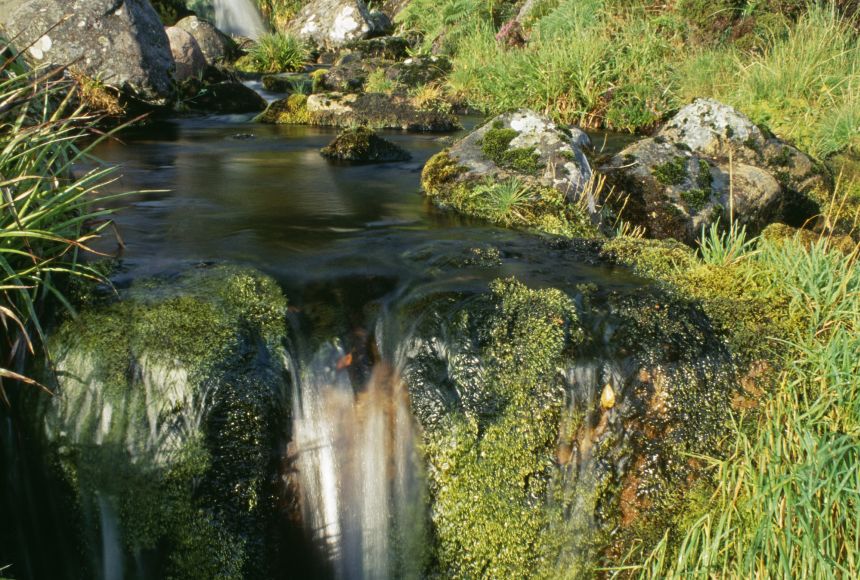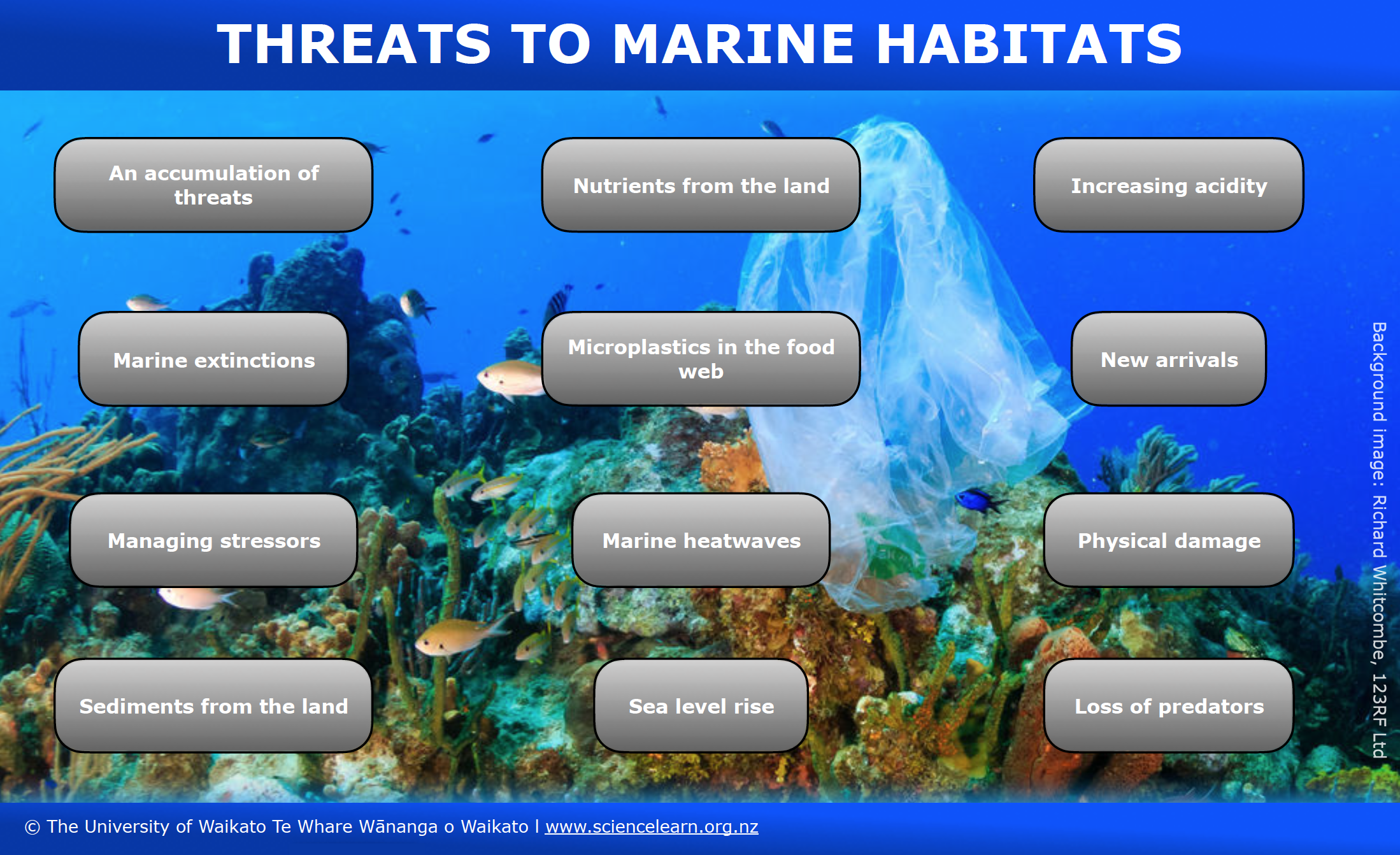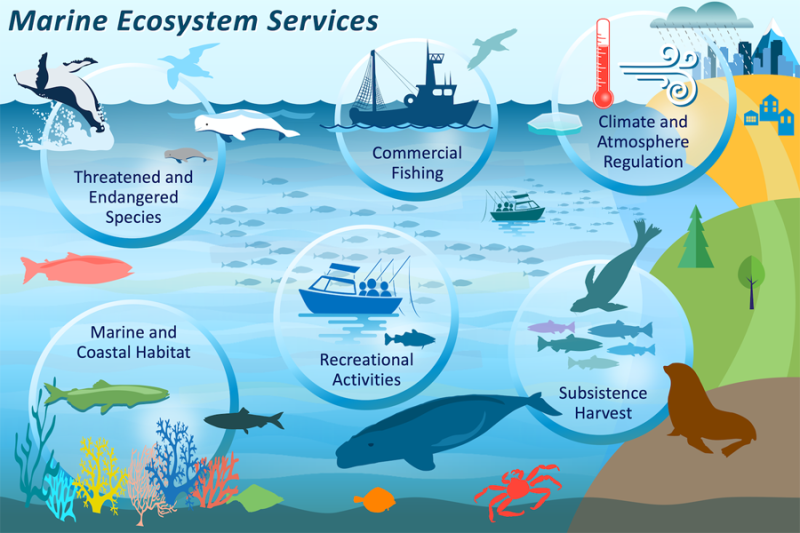Topic freshwater aquatic ecosystems: Explore the wonders of freshwater aquatic ecosystems, where life thrives in diverse habitats from serene lakes to flowing rivers, revealing the crucial role they play in our planet"s health and biodiversity.
Table of Content
- What are the key components of freshwater aquatic ecosystems?
- Definition and Importance of Freshwater Ecosystems
- Types of Freshwater Ecosystems: Lakes, Rivers, Wetlands, and More
- Biodiversity in Freshwater Ecosystems: Flora and Fauna
- Physical Characteristics: Water Quality, Temperature, and Flow
- Ecological Functions: Nutrient Cycling, Habitat Provision, and Food Webs
- Human Impact and Conservation Efforts: Pollution, Habitat Loss, and Restoration
- YOUTUBE: Types of Freshwater Ecosystems: Lakes, Ponds, Rivers, Streams, Wetlands
- Climate Change Effects: Alterations in Water Temperature and Levels
- Importance for Human Societies: Water Supply, Recreation, and Culture
- Research and Monitoring: Techniques and Technologies
- Global Initiatives and Policies for Freshwater Conservation
What are the key components of freshwater aquatic ecosystems?
In freshwater aquatic ecosystems, there are several key components that work together to create a dynamic and thriving environment. These components include:
- Physical features: Freshwater ecosystems are characterized by various physical features such as lakes, ponds, rivers, streams, springs, bogs, and wetlands.
- Water: Water is the primary element in freshwater ecosystems and serves as the habitat for numerous organisms.
- Plants: Aquatic plants, including submerged, floating, and emergent species, play a crucial role in freshwater ecosystems. They provide oxygen, food, shelter, and contribute to nutrient cycling.
- Algae: Algae are a diverse group of photosynthetic organisms that inhabit freshwater ecosystems. They are important primary producers and form the base of the food web.
- Animals: Freshwater ecosystems support a wide range of animal species, including fish, amphibians, reptiles, invertebrates, and various aquatic insects.
- Microorganisms: Microscopic organisms such as bacteria and fungi are essential for nutrient recycling, decomposition, and maintaining water quality in freshwater ecosystems.
- Nutrients: Nutrients like nitrogen and phosphorus are vital for the growth of aquatic plants and algae. They are obtained through various sources such as runoff, sediment, and organic matter.
- Interactions: The interactions between different organisms in freshwater ecosystems, including predation, competition, and symbiosis, shape the structure and dynamics of these ecosystems.
These key components work together in a complex web of interactions to create the diversity and ecological balance found in freshwater aquatic ecosystems.
READ MORE:
Definition and Importance of Freshwater Ecosystems
Freshwater ecosystems encompass a diverse range of habitats, including lakes, rivers, ponds, wetlands, and streams, crucial for supporting a vast array of life forms. They play a pivotal role in maintaining ecological balance, providing essential services such as water purification, flood control, and habitat provision for countless species.
- Supports biodiversity: Home to a rich variety of flora and fauna, contributing significantly to the planet"s biological diversity.
- Water supply: Crucial source of fresh water for drinking, agriculture, and sanitation.
- Climate regulation: Act as natural buffers against climate change by storing and regulating carbon and other greenhouse gases.
- Economic benefits: Support fisheries, recreation, and tourism industries, contributing to the livelihoods of millions of people worldwide.
- Ecosystem services: Include nutrient cycling, sediment retention, and providing nurseries for many aquatic species.
The importance of freshwater ecosystems extends beyond their ecological value, impacting social, economic, and cultural aspects of human societies. Their conservation and sustainable management are vital for ensuring water security, biodiversity preservation, and the well-being of future generations.

Types of Freshwater Ecosystems: Lakes, Rivers, Wetlands, and More
Freshwater ecosystems are diverse habitats essential for life on Earth, providing water for hydration, habitat for species, and many ecological services. Understanding the different types of freshwater ecosystems is crucial for their conservation and the sustainability of their resources.
- Lakes: Still, deep bodies of freshwater ranging from small ponds to large lakes, supporting a diverse range of aquatic life.
- Rivers and Streams: Flowing bodies of water that move continuously in one direction, often supporting species adapted to stronger currents.
- Wetlands: Areas where water covers the soil, or is present either at or near the surface of the soil all year or for varying periods of time during the year, including swamps, marshes, and bogs.
- Ponds: Small bodies of still water formed naturally or by artificial means, supporting aquatic plants and animals.
- Wetlands: Include marshes, swamps, and bogs, vital for water purification, flood protection, and biodiversity.
Each type of freshwater ecosystem plays a unique role in the environment, supporting various species of plants, animals, and microorganisms. They are critical for the hydrological cycle, ecological balance, and human survival. Conservation efforts are essential to protect these invaluable natural resources for future generations.
Biodiversity in Freshwater Ecosystems: Flora and Fauna
Freshwater ecosystems are teeming with life, hosting an incredible variety of flora and fauna that contribute to the ecological balance and biodiversity of our planet. These ecosystems are vital for the survival of many species, providing essential habitats, food sources, and breeding grounds.
- Flora: Includes aquatic plants like algae, reeds, and water lilies, which play a crucial role in oxygen production, water purification, and providing habitats for aquatic life.
- Fauna: Encompasses a wide range of animals, including fish species such as trout and salmon, amphibians like frogs and salamanders, and a myriad of invertebrates including insects, mollusks, and crustaceans.
- Birds: Wetlands and lakes are critical habitats for numerous bird species, including ducks, herons, and kingfishers, which rely on freshwater ecosystems for food, nesting, and migration stopovers.
- Mammals: Some mammals, such as beavers, otters, and certain bats, are closely associated with freshwater ecosystems, depending on them for food, shelter, and water.
- Microorganisms: Freshwater ecosystems are also home to countless microorganisms, including bacteria, protozoa, and fungi, which are essential for nutrient cycling and decomposing organic matter.
The rich biodiversity found in freshwater ecosystems plays a critical role in maintaining the health of our environment. It supports the food web, contributes to the genetic diversity of species, and provides numerous ecological services that are essential for life on Earth. Protecting these ecosystems is vital for preserving our planet"s biodiversity and ensuring a sustainable future.

Physical Characteristics: Water Quality, Temperature, and Flow
The physical characteristics of freshwater ecosystems, including water quality, temperature, and flow, play a crucial role in determining the health and biodiversity of these habitats. These factors influence the types of organisms that can thrive and the overall functioning of the ecosystem.
- Water Quality: Refers to the chemical, physical, and biological characteristics of water. It is essential for maintaining healthy aquatic ecosystems and supporting diverse life forms. Factors affecting water quality include pollution, nutrient levels, pH, and the presence of toxic substances.
- Temperature: Varies significantly across different freshwater ecosystems and can influence metabolic rates of aquatic organisms, dissolved oxygen levels, and the distribution of species. Temperature is affected by environmental factors such as sunlight, shade, and water depth.
- Flow: The speed and direction of water movement, critical for shaping river and stream ecosystems. Flow affects sediment transport, habitat structure, and the availability of nutrients. It also influences the life cycles and distribution of aquatic species.
Understanding and monitoring these physical characteristics are vital for the conservation of freshwater ecosystems. They directly impact water quality, habitat suitability, and the overall health and resilience of aquatic environments.
Ecological Functions: Nutrient Cycling, Habitat Provision, and Food Webs
Freshwater ecosystems perform critical ecological functions that sustain biodiversity, support ecosystems, and benefit human societies. They are integral to nutrient cycling, providing habitats, and maintaining complex food webs.
- Nutrient Cycling: Freshwater ecosystems are vital in the cycling of nutrients, such as nitrogen and phosphorus. They help in breaking down organic matter, which releases nutrients back into the water and soil, supporting plant growth and sustaining the ecosystem"s productivity.
- Habitat Provision: These ecosystems provide diverse habitats for a wide range of species. From the depths of lakes to the flowing waters of rivers, each environment supports unique communities of organisms, offering shelter, breeding grounds, and nesting sites.
- Food Webs: Freshwater ecosystems host complex food webs, where organisms are interconnected through their dietary preferences. From microscopic algae to top predators, each species plays a role in the energy flow and biological interactions within the ecosystem.
These ecological functions are fundamental for the resilience and stability of freshwater ecosystems. They ensure the provision of ecosystem services such as water purification, flood control, and climate regulation, which are indispensable for life on Earth.

Human Impact and Conservation Efforts: Pollution, Habitat Loss, and Restoration
Human activities have significantly impacted freshwater ecosystems, leading to pollution, habitat loss, and a decline in biodiversity. However, concerted conservation efforts are underway to mitigate these impacts and restore these vital habitats.
- Pollution: Industrial discharge, agricultural runoff, and urban waste introduce pollutants such as chemicals, plastics, and heavy metals into freshwater systems, adversely affecting water quality and aquatic life.
- Habitat Loss: Development projects, deforestation, and land use changes lead to the destruction and fragmentation of freshwater habitats, threatening the survival of many species.
- Overexploitation: Excessive fishing, water extraction for agriculture and industry, and recreational activities can deplete resources and disrupt aquatic ecosystems.
- Climate Change: Altered rainfall patterns, increased temperatures, and extreme weather events can change water availability and quality, affecting freshwater species and habitats.
Conservation Efforts:
- Protected Areas: Establishing protected areas to conserve critical freshwater habitats and biodiversity.
- Restoration Projects: Initiatives to restore degraded freshwater ecosystems, including reforestation, wetland restoration, and riverine habitat rehabilitation.
- Policy and Legislation: Implementing laws and regulations to reduce pollution, manage resources sustainably, and protect endangered species.
- Community Engagement: Involving local communities in conservation efforts, promoting sustainable practices, and raising awareness about the importance of freshwater ecosystems.
Through these efforts, we aim to safeguard freshwater ecosystems for future generations, ensuring the preservation of their biodiversity and the services they provide to humanity.
Types of Freshwater Ecosystems: Lakes, Ponds, Rivers, Streams, Wetlands
Dive into the fascinating world of ecosystems and discover the intricate balance of nature. Explore the diversity of plant and animal life in this captivating video that showcases the beauty and importance of preserving our delicate ecosystems.
Freshwater Ecosystem Types
Curious about the different types of ecosystems that exist around the world? This eye-opening video takes you on a global journey, introducing you to stunning landscapes and teaching you about the unique characteristics of each ecosystem. Expand your knowledge and appreciation for the incredible variety of life on our planet.
Climate Change Effects: Alterations in Water Temperature and Levels
Climate change is significantly affecting freshwater ecosystems through alterations in water temperature and levels, impacting the distribution and health of aquatic life, and altering the availability of water for humans and wildlife.
- Increased Water Temperature: Rising global temperatures lead to higher water temperatures in lakes, rivers, and streams. This affects species" metabolism, reproduction rates, and can lead to the loss of temperature-sensitive species.
- Altered Precipitation Patterns: Changes in rainfall patterns can lead to droughts or flooding, impacting water quality, habitat availability, and species distribution.
- Glacial Melt: The melting of glaciers, a critical source of freshwater for many ecosystems, leads to reduced water availability in the long term and impacts water temperature and flow patterns.
- Sea Level Rise: Affects freshwater systems near coasts by increasing saltwater intrusion, which can degrade freshwater habitats and reduce the availability of fresh water for human and ecological use.
- Increased Carbon Dioxide: Higher levels of CO2 in the atmosphere can lead to acidification of freshwater bodies, impacting aquatic life and ecosystems" overall health.
These changes necessitate adaptive management strategies to mitigate the impacts of climate change on freshwater ecosystems, ensuring the preservation and resilience of these critical habitats for future generations.

Importance for Human Societies: Water Supply, Recreation, and Culture
Freshwater ecosystems are invaluable to human societies, providing essential services that support our daily lives, economies, and cultural practices. Their significance extends beyond the immediate ecological benefits, underpinning the sustainability of human communities around the globe.
- Water Supply: Freshwater ecosystems are the source of drinking water for billions of people worldwide. They also supply water for agricultural irrigation, industrial processes, and sanitation needs.
- Recreation: Lakes, rivers, and wetlands offer recreational opportunities such as fishing, boating, swimming, and bird watching, contributing to human well-being and quality of life.
- Cultural Significance: Many cultures hold rivers, lakes, and springs in high regard, associating them with historical, spiritual, and cultural values. They are sites for community gatherings, ceremonies, and traditional practices.
- Economic Value: The tourism industry benefits from freshwater ecosystems through activities like eco-tourism, sport fishing, and water sports, generating income for local communities and contributing to economic development.
- Food Resources: Freshwater ecosystems provide a vital source of food, including fish and other aquatic animals, contributing to food security and nutrition for millions of people.
The preservation of freshwater ecosystems is crucial not only for maintaining biodiversity and ecological health but also for sustaining the multifaceted benefits they offer to human societies. Protecting these natural resources ensures a legacy of water security, cultural heritage, and recreational opportunities for future generations.
Research and Monitoring: Techniques and Technologies
Research and monitoring in freshwater aquatic ecosystems are critical for understanding ecosystem dynamics, assessing environmental changes, and guiding conservation efforts. Advanced techniques and technologies have revolutionized how scientists study these vital systems.
- Remote Sensing: Utilizes satellites and drones to collect data on water quality, vegetation cover, and habitat changes over large areas, providing valuable insights into ecosystem health and trends.
- GIS (Geographic Information Systems): Powerful tools for mapping and analyzing spatial data, helping researchers understand the distribution of species, habitats, and environmental impacts.
- Water Quality Monitoring: Employs sensors and manual sampling to measure physical and chemical parameters of water, such as temperature, pH, dissolved oxygen, and pollutants, which are crucial for assessing the health of aquatic ecosystems.
- Biological Surveys: Involve the collection and analysis of biological data, including species counts and biodiversity assessments, to monitor changes in ecosystem composition and health.
- Ecological Modeling: Uses mathematical models to simulate ecosystem processes and predict the effects of environmental changes, management practices, and climate change on freshwater ecosystems.
- Citizen Science: Engages the public in data collection and monitoring efforts, expanding research reach and fostering community involvement in conservation.
These techniques and technologies enable a comprehensive understanding of freshwater ecosystems, informing policy decisions, conservation strategies, and sustainable management practices to ensure the resilience and health of these crucial natural resources.

READ MORE:
Global Initiatives and Policies for Freshwater Conservation
Addressing the challenges facing freshwater ecosystems requires coordinated global initiatives and policies aimed at their conservation and sustainable management. Efforts at various levels are being implemented to protect these vital resources for future generations.
- International Agreements: Treaties such as the Ramsar Convention on Wetlands and the Convention on Biological Diversity set frameworks for the conservation and sustainable use of freshwater resources and biodiversity.
- Water Management Policies: Policies focusing on integrated water resource management (IWRM) aim to balance human and environmental water needs, ensuring sustainable use of freshwater ecosystems.
- Conservation Projects: Global and local conservation projects work towards restoring degraded freshwater habitats, protecting endangered species, and improving water quality.
- Climate Change Adaptation: Strategies are being developed to help freshwater ecosystems adapt to the impacts of climate change, including water conservation, habitat protection, and restoration efforts.
- Public Awareness and Education: Efforts to increase public understanding of the importance of freshwater ecosystems and the challenges they face are crucial for fostering support for conservation initiatives.
- Scientific Research: Ongoing research into freshwater ecosystems helps inform policy and management decisions, ensuring they are based on the latest scientific knowledge.
These global initiatives and policies represent a concerted effort to address the complex challenges facing freshwater ecosystems. Through international cooperation, policy development, and local action, we can ensure the preservation and sustainable management of these essential natural resources.
As guardians of our planet"s future, understanding and protecting freshwater aquatic ecosystems is essential. Let"s commit to preserving these life-sustaining treasures for generations to come, embracing their beauty and vital role in our world.














